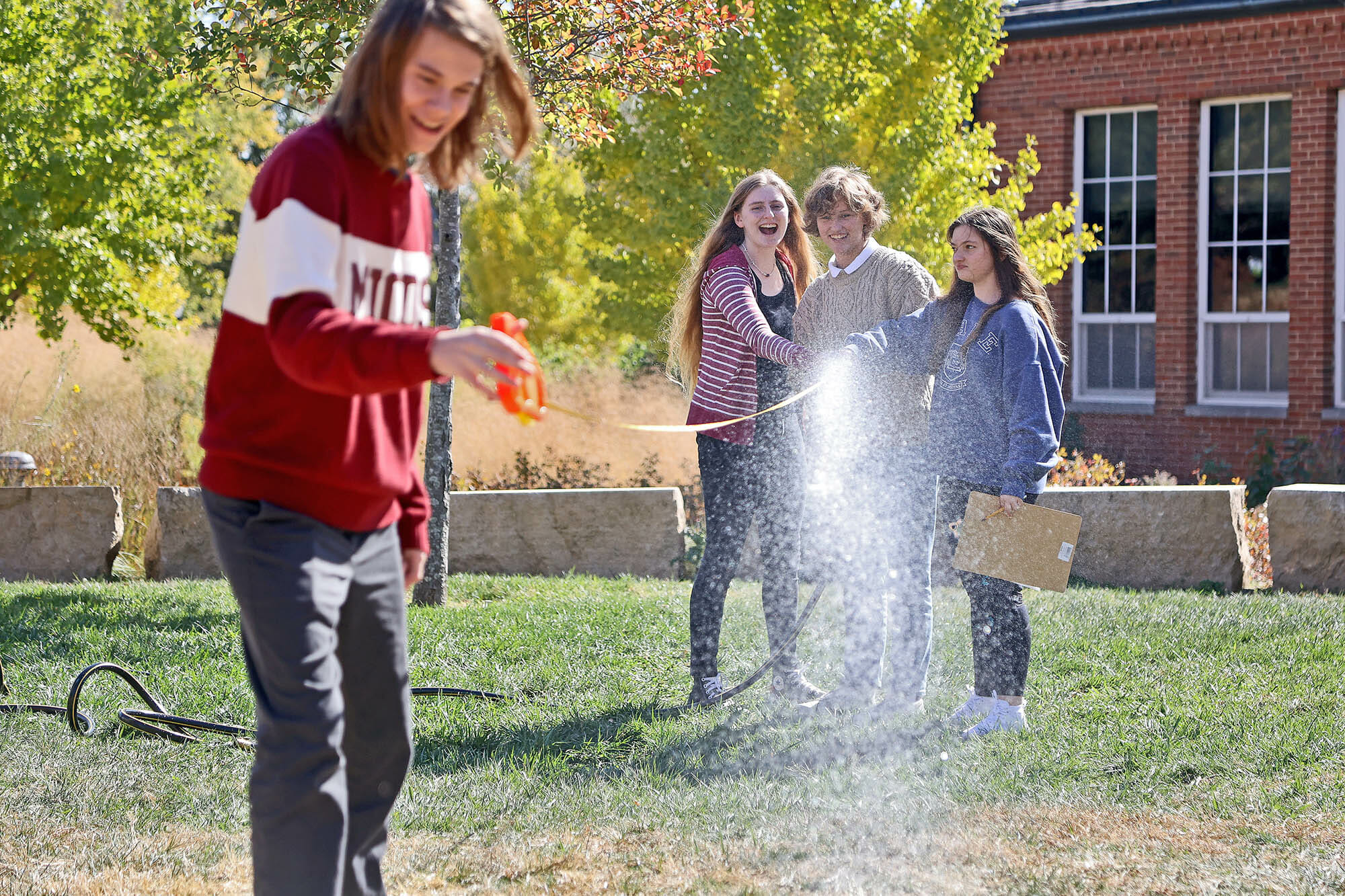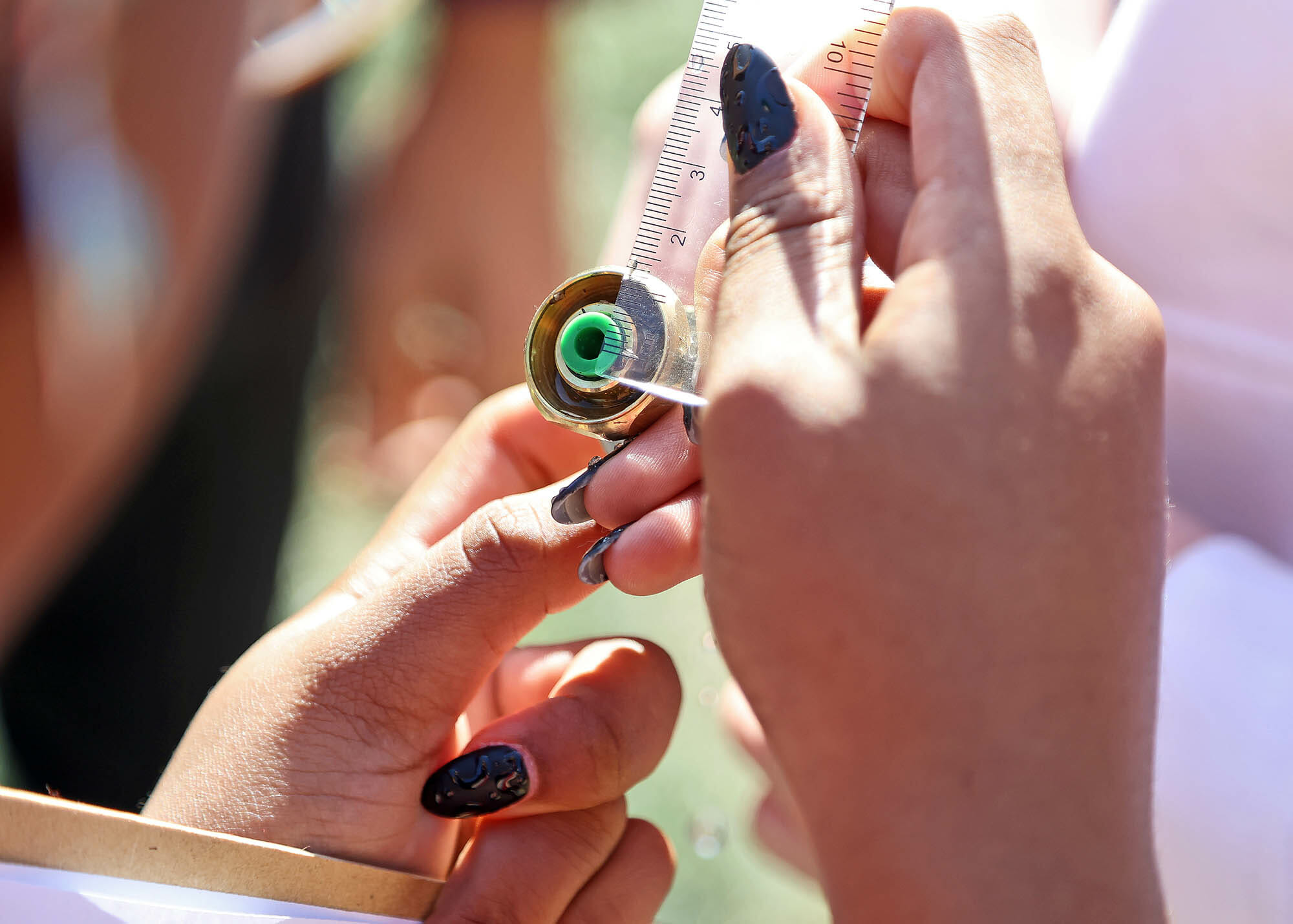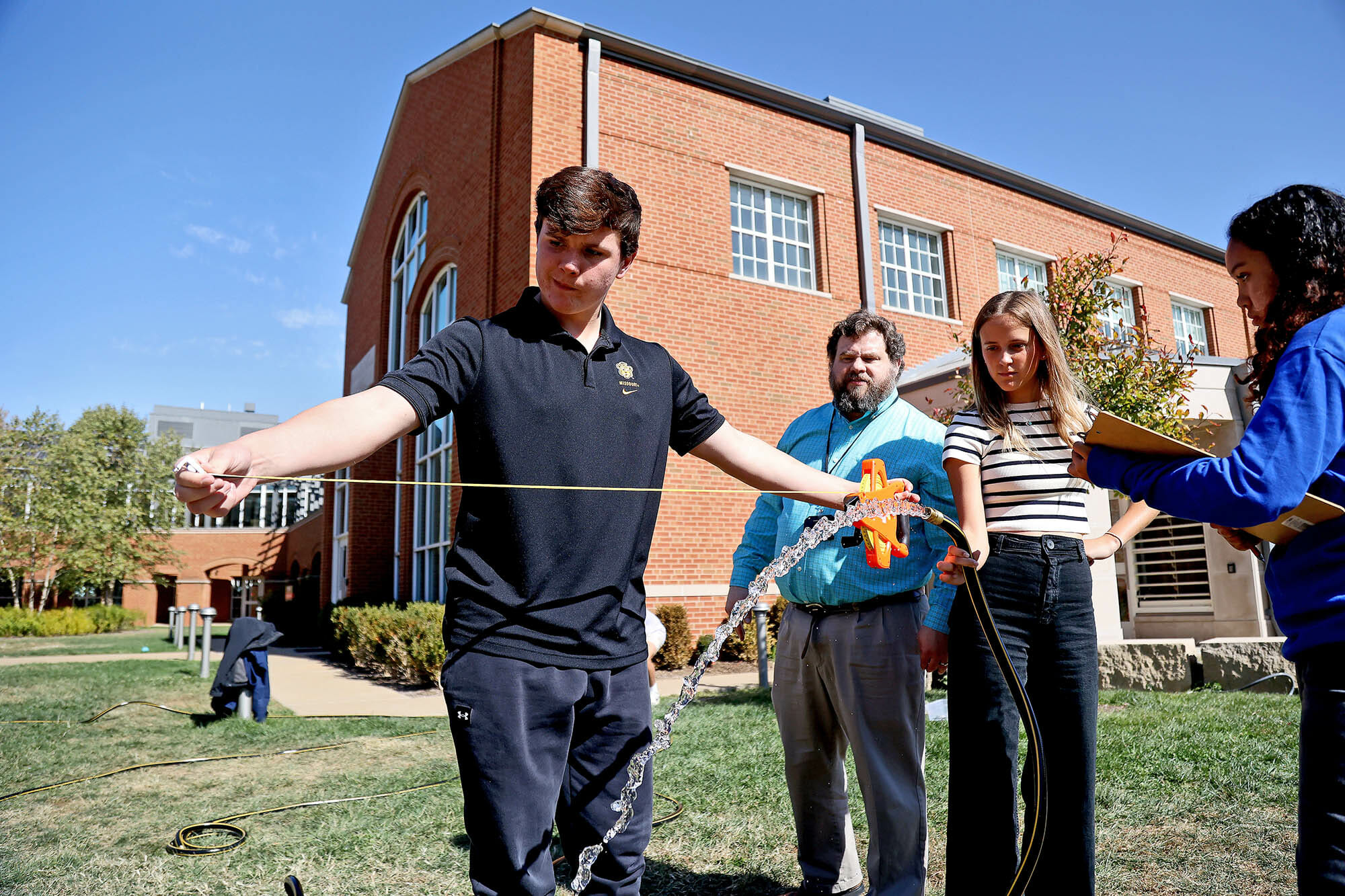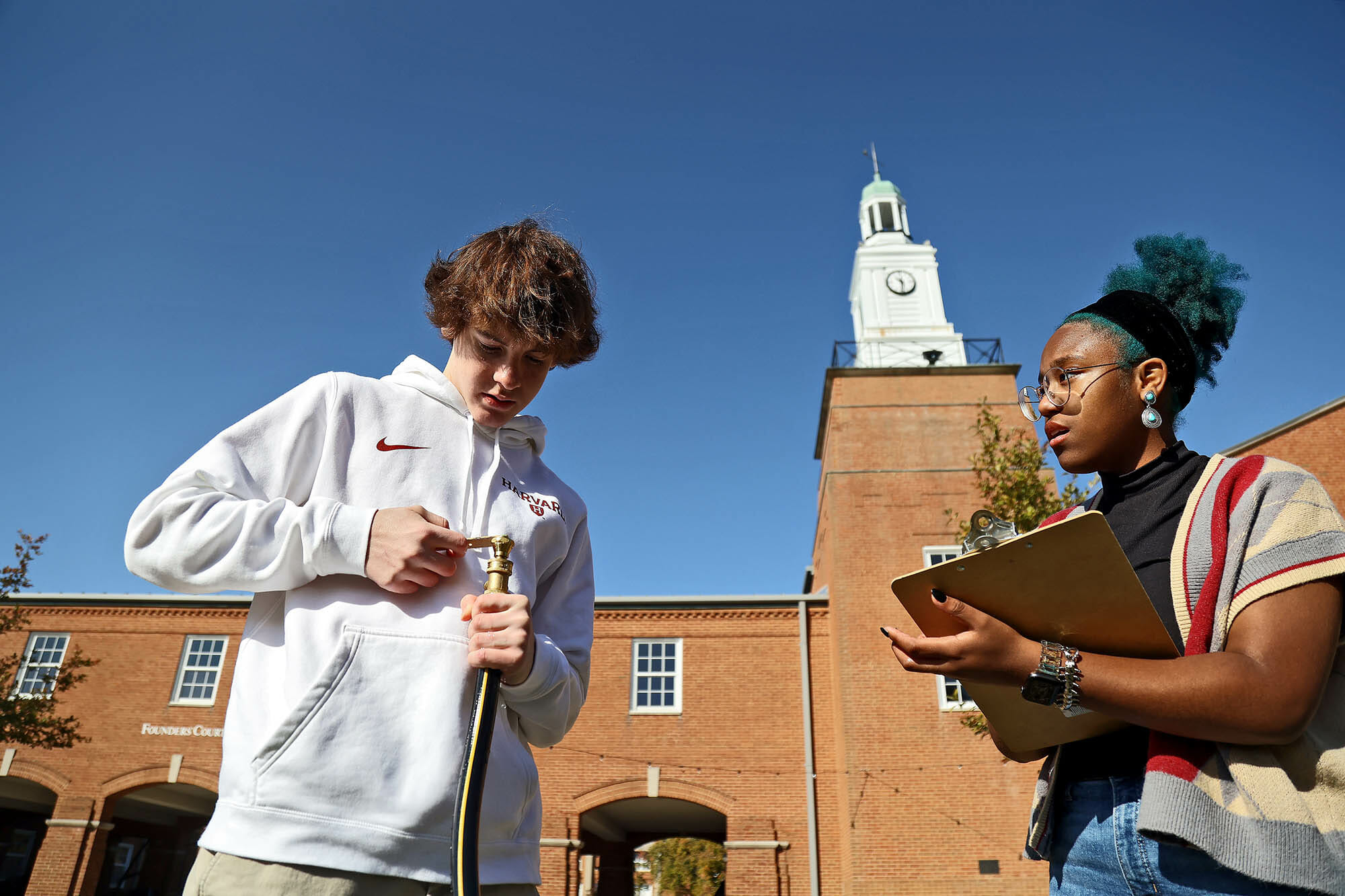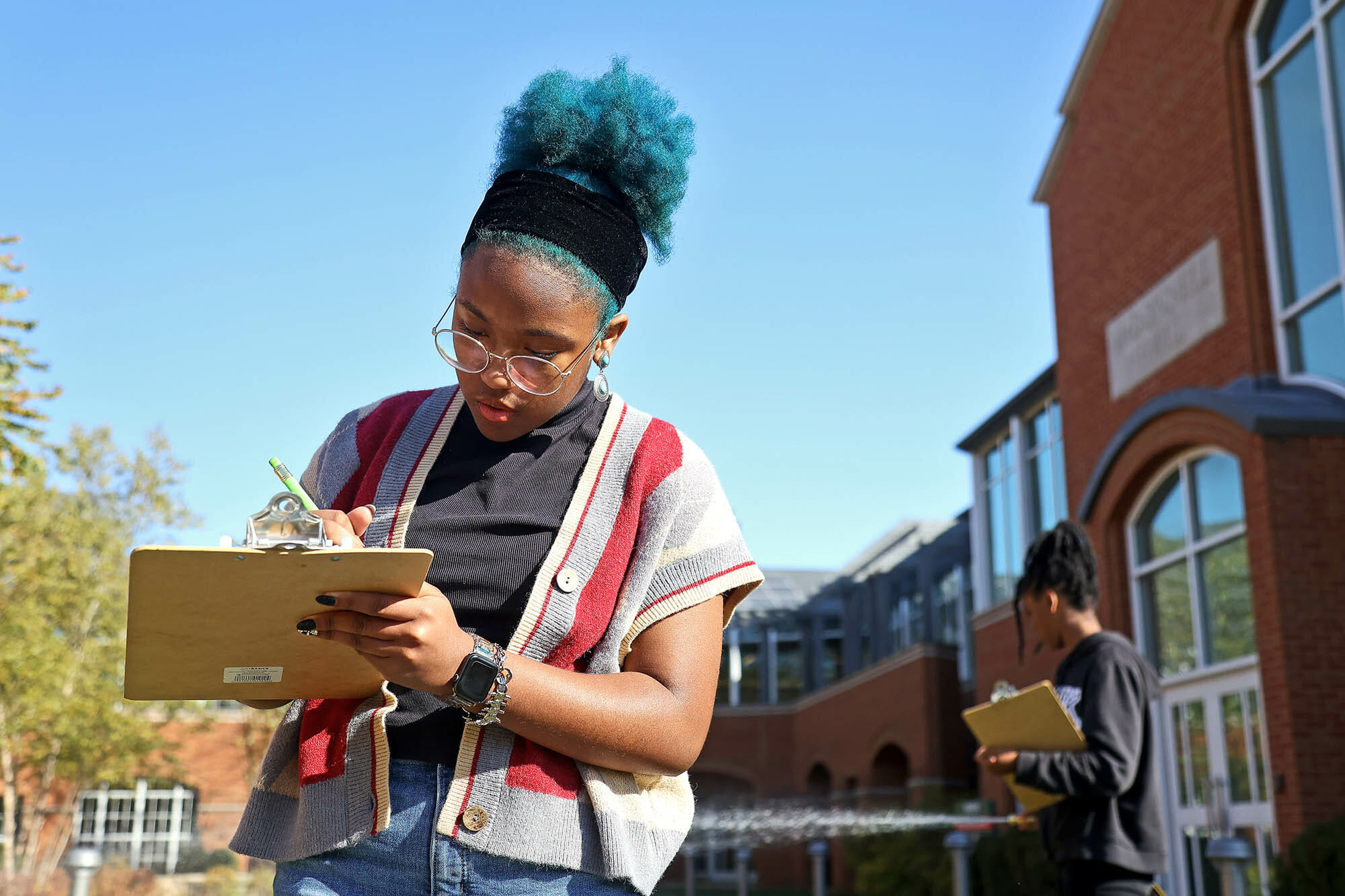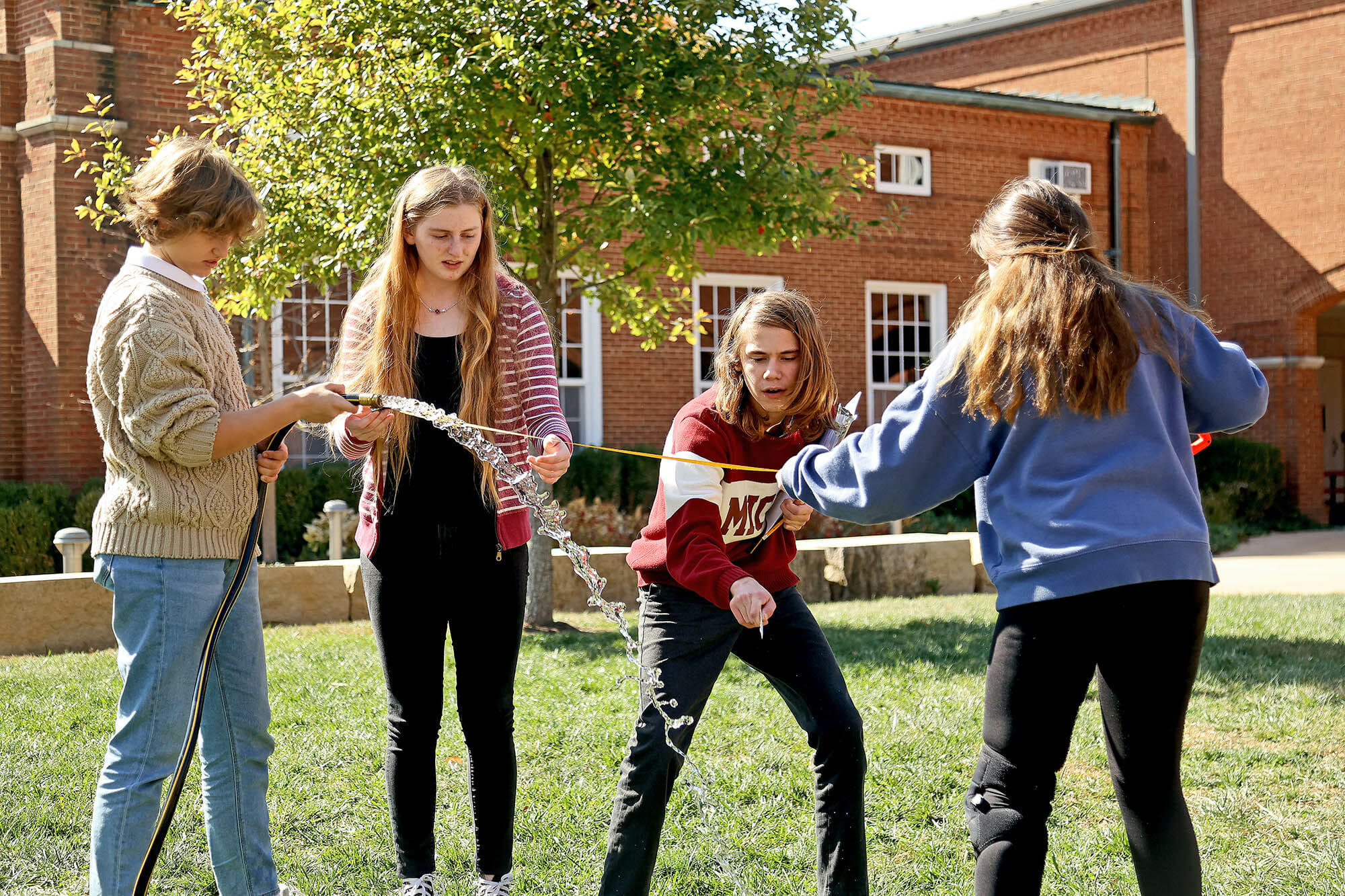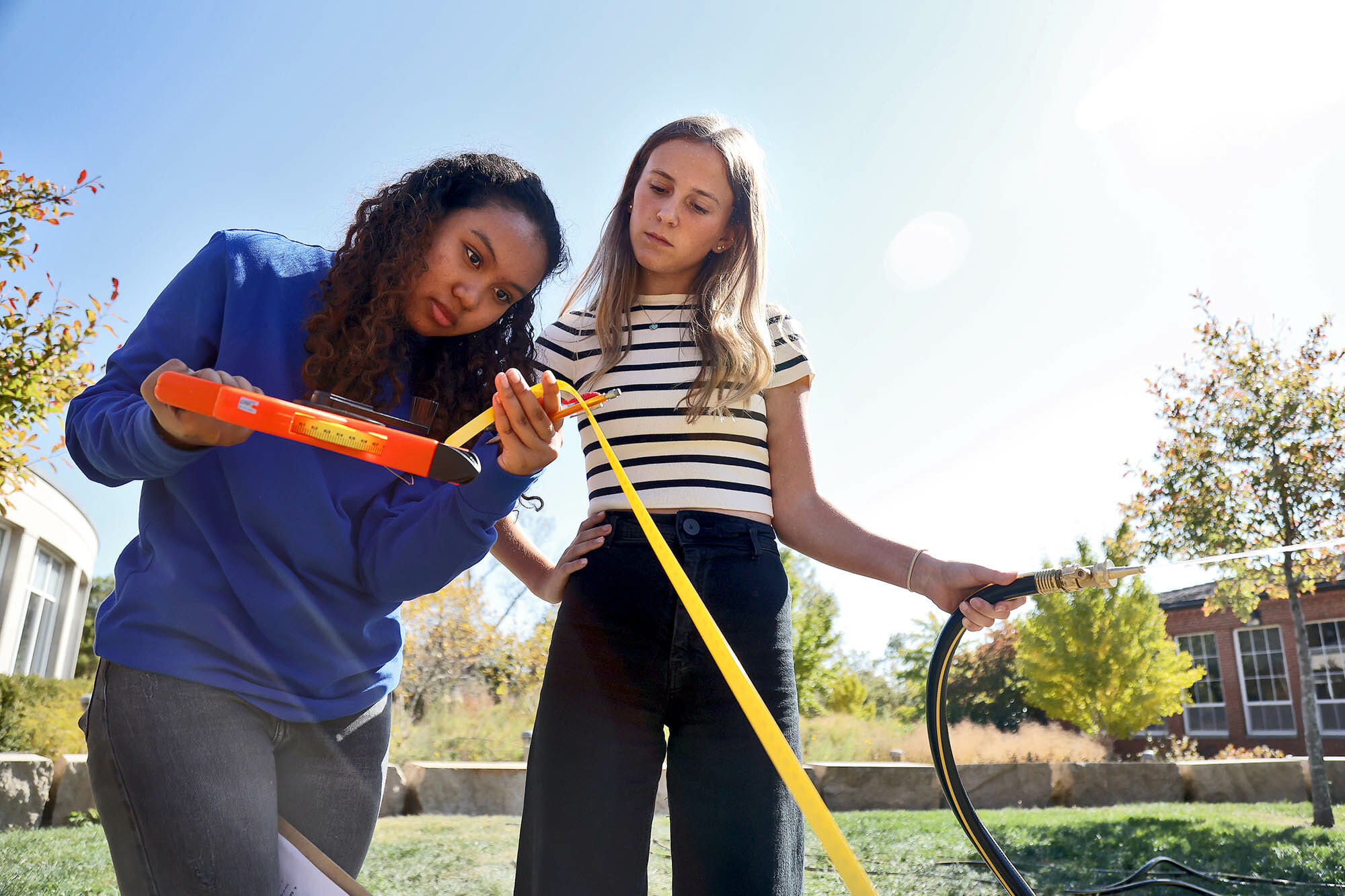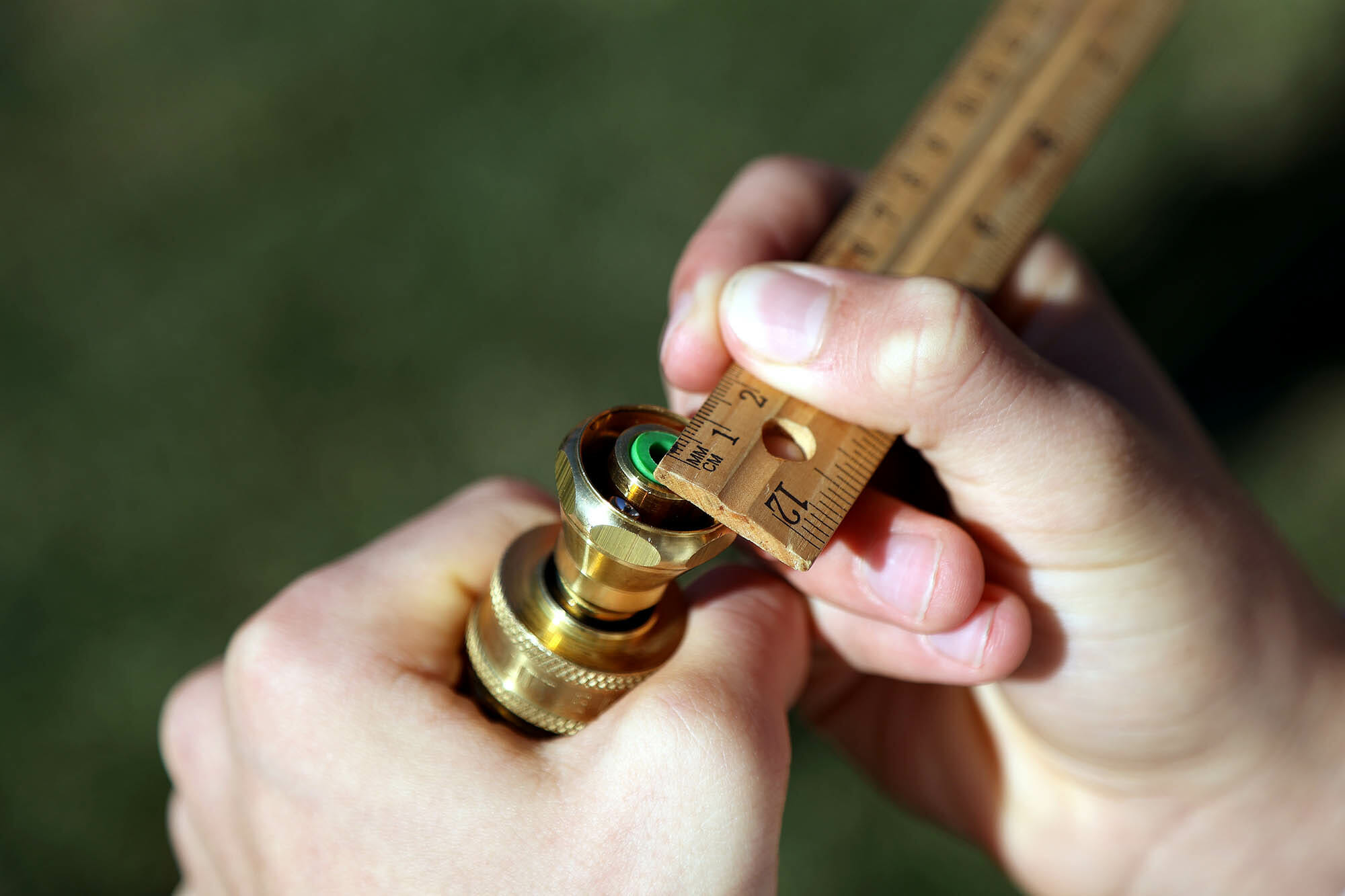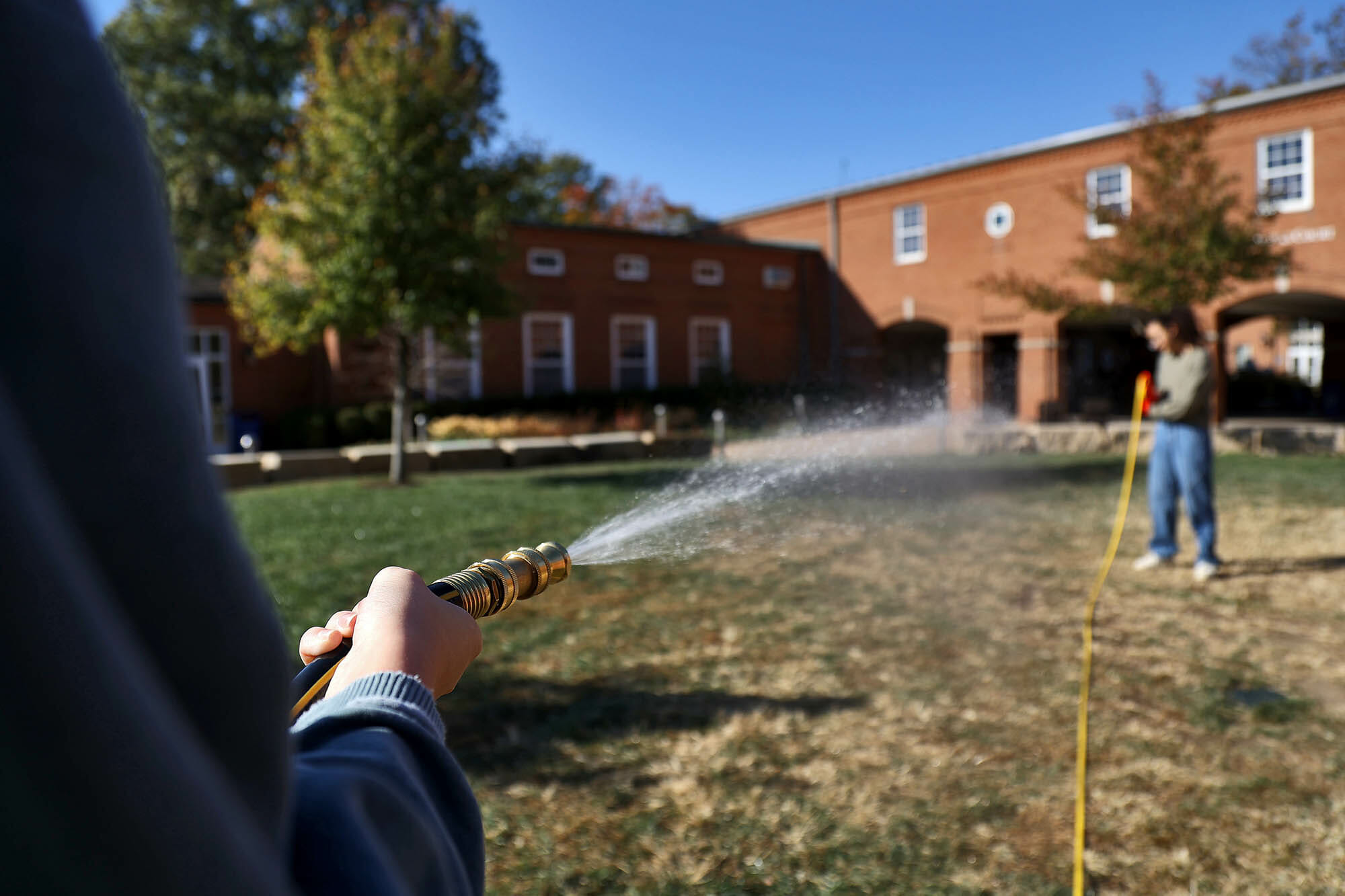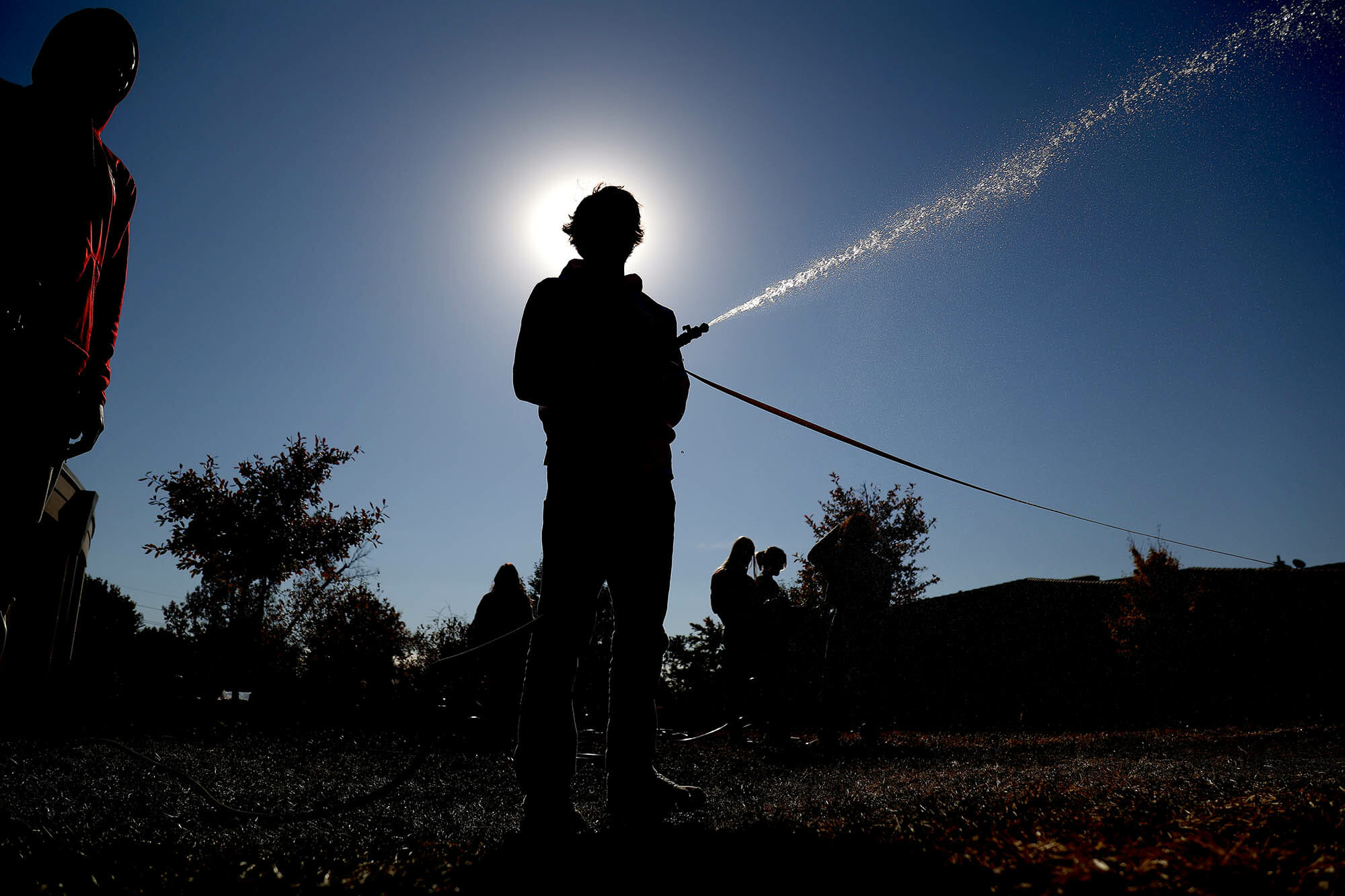Tenth-grade scientists have started work on their long-term fire extinguisher project, which has now become an annual tradition at MICDS. This year, the Science 10 teaching team added a new component: nozzle play.
The ultimate goal for students is to design and produce a fire extinguisher, and an important component is, of course, the nozzle. For fire extinguishers, CO2 gas exits the device through the nozzle. It’s a vital piece that can make the difference between success and failure. In the final test, each team will use their design to extinguish a flame a meter away. The nozzle helps ensure the CO2 gas is expelled with force and with accurate aim.
Student teams began by brainstorming on the essential characteristics of nozzles that influence how a substance is sprayed when it exits a nozzle. Then, they put their ideas into practice by experimenting with a garden hose and fixed and adjustable nozzles. Using a ruler and tape measure, they collected data such as the size of the opening, the distance of water spray, and the quality of water spray (stream, diffuse spray, narrow spray, wide spray, etc.). They summarized their results and reflected on the relationship between nozzle characteristics and water spray, and applied that thinking to their own nozzle design. They also had to consider if they would have had similar findings by analyzing gas flowing from the nozzle instead, and relating what they learned back to the Gas Laws and the properties of gases they’ve been studying.

